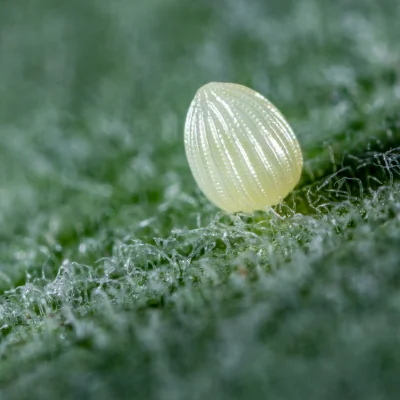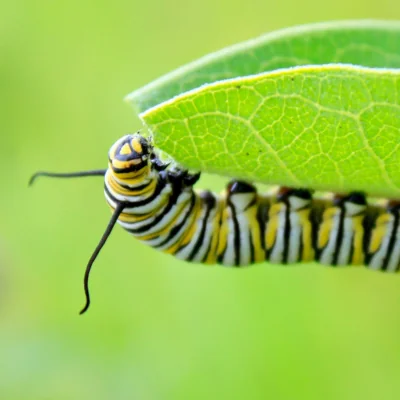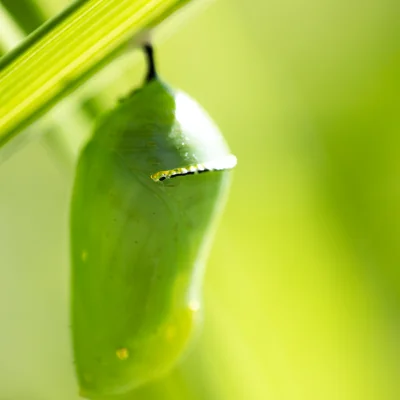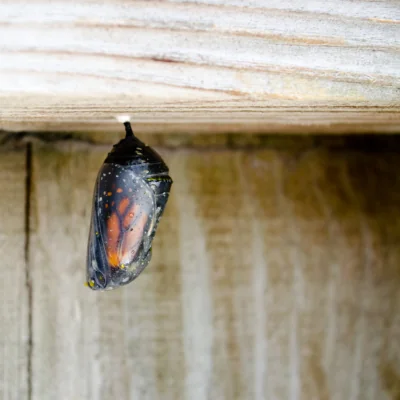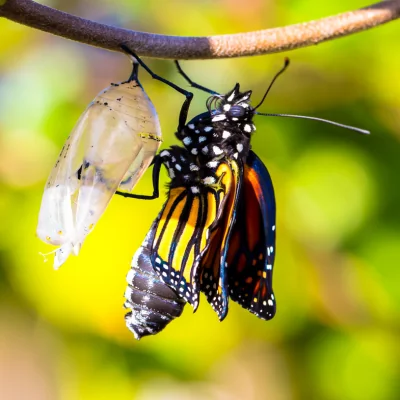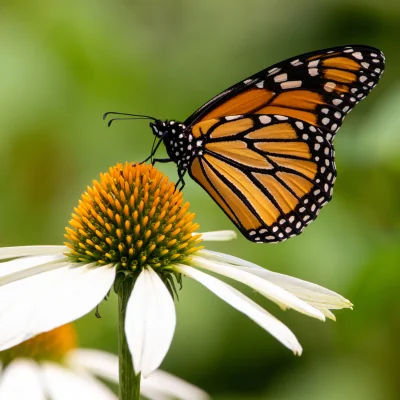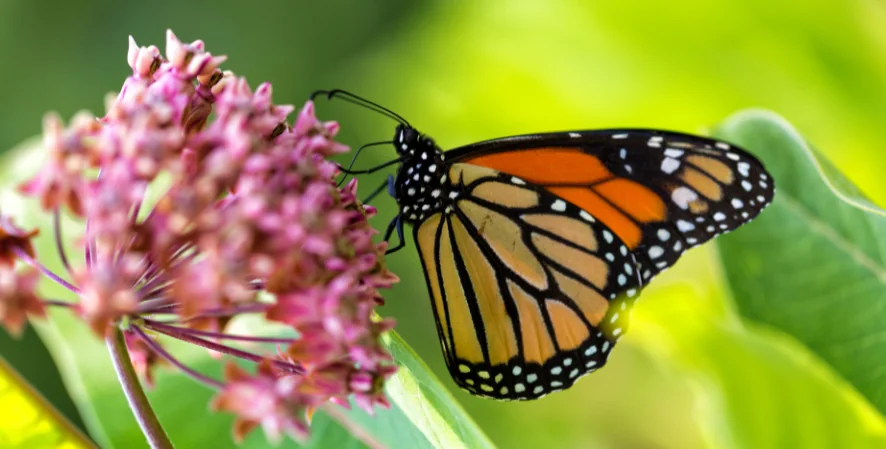
Migratory Monarchs Endangered
Migratory monarch butterflies are endlessly fascinating. Their annual journey of up to 2,500 miles (about the width of the United States) is impressive for any species, particularly for such a delicate-looking insect. This trek is filled with danger. Not only do these butterflies need to worry about predators, car windshields, and summer storms, but they increasingly face pressure from climate change, habitat loss, pesticides and herbicides. Such threats are pushing migratory monarchs towards extinction. In July 2022, Danaus plexippus plexippus entered the IUCN Red List of Threatened Species™ as Endangered.
The migratory monarch butterfly is a subspecies of the monarch butterfly (Danaus plexippus). It spends winters in Mexico and California before moving to its summer breeding grounds throughout the U.S. and Canada. But populations are dwindling, having shrunk between 22% and 72% over the past decade. In particular, the western subpopulation has declined precipitously over the past decades, losing approximately 97% of its average historic abundance between the 1980s and mid-2010.
Monarch caterpillars exclusively feed on milkweed plants. Such plants are vanishing from our landscapes due to urban development and agriculture. Without these host plants, monarchs have nowhere to lay their eggs and nothing to eat in their larval stage. Climate change also puts pressure on milkweed habitat. Drought limits the growth of milkweed plants and increases the likelihood of large and too frequent wildfires.
“It is difficult to watch monarch butterflies and their extraordinary migration teeter on the edge of collapse, but there are signs of hope. So many people and organizations have come together to try and protect this butterfly and its habitats. From planting native milkweed and reducing pesticide use to supporting the protection of overwintering sites and contributing to community science, we all have a role to play in making sure this iconic insect makes a full recovery,” said Anna Walker, member of the IUCN SSC Butterfly and Moth Specialist Group and Species Survival Officer at the New Mexico BioPark Society, who led the monarch butterfly assessment.
The Global Center for Species Survival’s Freshwater Conservation Coordinator Monni Böhm also co-chairs the IUCN SSC Butterfly and Moth Specialist Group. She reviewed the assessment for the migratory monarch and provided feedback along the way. “It’s great to see the migratory monarch assessment finally published on the IUCN Red List. This assessment has been a long time coming given the high profile of monarchs. While the circumstances are dire, given its Endangered listing, it is encouraging to see the popularity of this flagship insect! Having only recently moved to Indy from Europe, I am just now experiencing my first full monarch season – I hope that with the passion displayed by so many, we can ensure the survival of the spectacle that is the annual monarch migration.”
HOW YOU CAN HELP
To help monarchs and many other amazing animals, please plant milkweed on your property. Even small garden patches can make a big difference. There are many types of milkweed, so check which species are native to your region. Species in the Midwest include swamp, four-leaved, clasping, tall green, butterfly weed, green comet, prairie, oval-leaved, showy, poke, common, whorled, redring, green and purple. As you might expect, common milkweed is the most widespread. You’ve probably seen it growing along the highway.
Other blooming plants support monarchs as well. While the caterpillars exclusively feed on milkweed, the adults drink nectar from a wide variety of flowers. Filling your garden with native plants that bloom at different times of the year ensures butterflies always have food and provides you with the chance to see this beautiful animal firsthand. Learn more about native gardening in a previous Protect Species blog post.
We must also limit pesticides and herbicides whenever and wherever possible. We understand that some pests – such as ticks and mosquitoes – can transmit diseases to humans and pets, and you may want to use pest control products to keep your family safe. Just make sure you use targeted approaches and that the spaces of your garden frequented by pollinators are free of such chemicals.
HELPFUL LINKS
- The Xerces Society
- ABQ BioPark
- IUCN SSC Butterfly and Moth Specialist Group
- IUCN Red List of Threatened Species™
Published July 25, 2022


